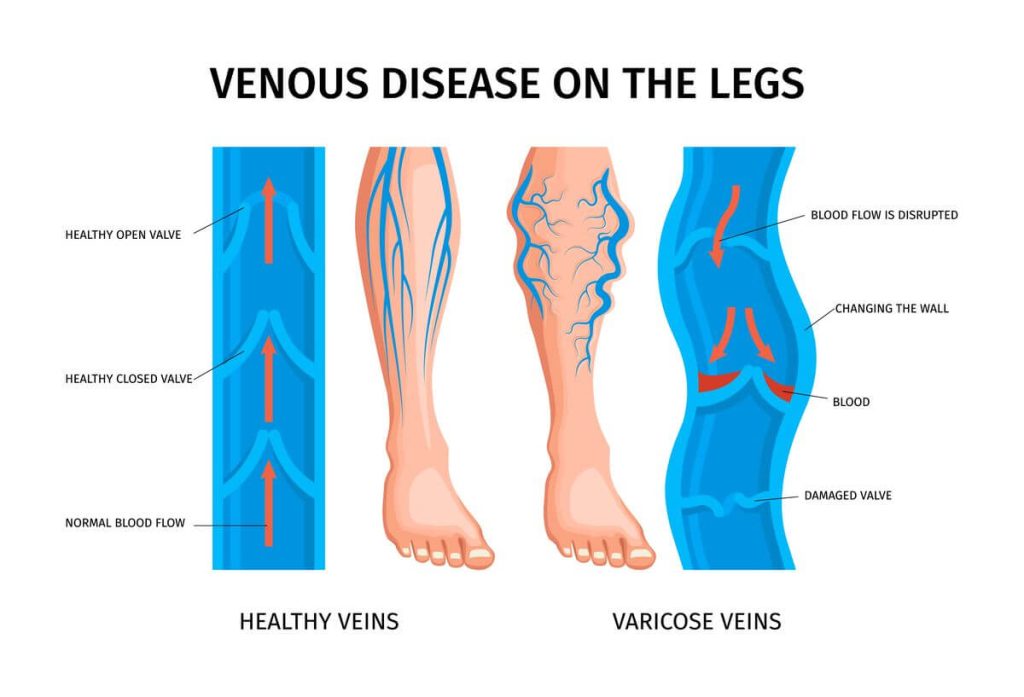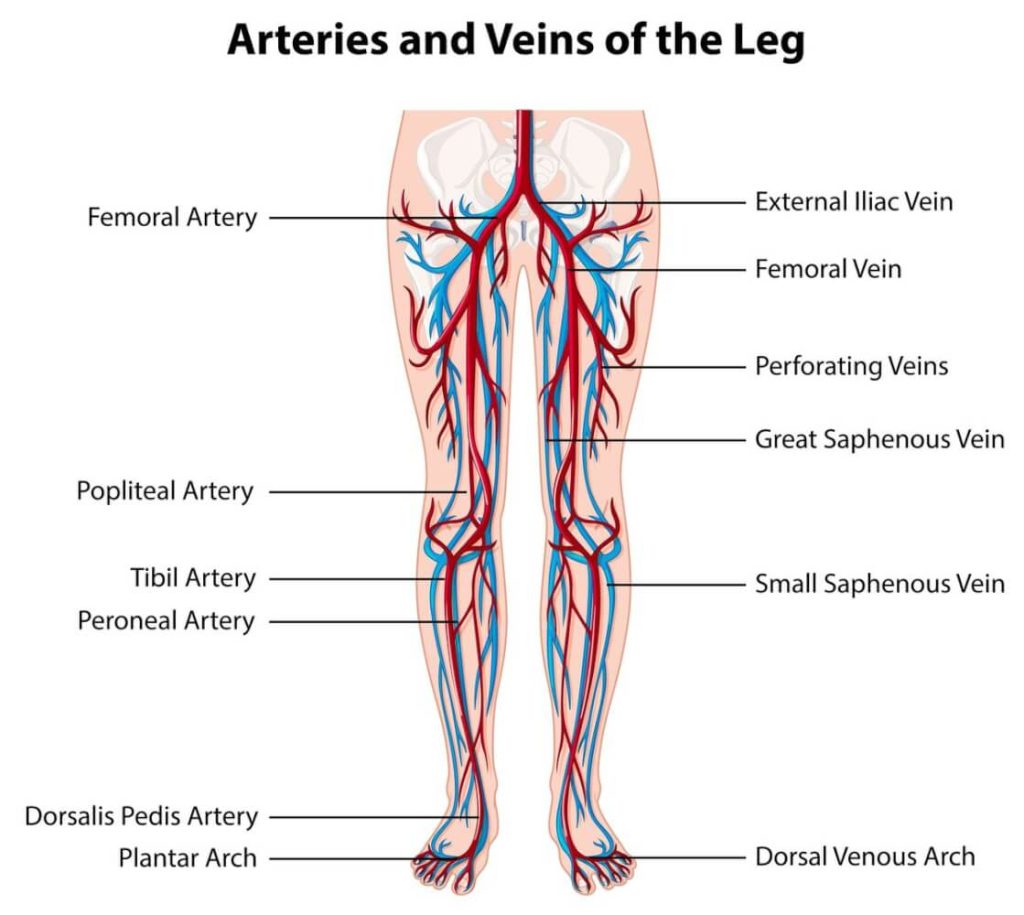What is chronic venous insufficiency?
Chronic venous insufficiency (CVI) occurs when your leg veins don’t allow blood to flow efficiently back up to your heart. Typically, the valves in your veins make sure that blood flows toward your heart. But when these valves don’t work well, blood can also flow slowly or backwards.

If this condition is not treated, you may have:
- Pain
- Swelling
- Cramps
- Skin changes
- Varicose veins
- Leg ulcers
Chronic venous insufficiency can be painful and disabling. Also, it may negatively impact athletic performance, circulation, endurance, and even sexual health.
What causes chronic venous insufficiency?
You are more likely to have this condition if you:
- Have a physically demanding job
- Are overweight
- Are pregnant
- Have a family history of the problem
- Had damage to your leg due to injury, surgery, or previous blood clots

It is very important to note that you may not see physical signs of venous insufficiency.
Other causes of chronic venous insufficiency include:
- High blood pressure in the leg veins over time, due to sitting or standing for long periods
- Lack of exercise
- Smoking
- Swelling and inflammation of a vein close to the skin, often in the legs (phlebitis)
What are the symptoms of chronic venous insufficiency?
Symptoms of chronic venous insufficiency may include:
- weak legs
- leg cramps or muscle spasms (charly horse)
- erectile dysfunction (ED)
- delayed wound healing
- prolonged injury recovery
- aching, throbbing, or a feeling of heaviness in your legs
- swelling of the legs or ankles (edema)
- pain that gets worse when you stand and gets better when you raise your legs
- itchy legs
- varicose veins
- a feeling of tightness in your calves
- thickening of the skin on your legs or ankles
- skin that is changing color, especially around the ankles
- leg ulcers
These symptoms may seem similar to other health conditions so it is important to talk with your healthcare provider for a medical diagnosis.
How is chronic venous insufficiency diagnosed?
Your provider will take your medical history and give you an exam. You may also have an imaging test which can be done with ultrasound. This looks at blood flow and the structure of your leg veins. It checks the speed and direction of blood flow in the blood vessel.
What is the treatment for chronic venous insufficiency?
Your healthcare provider will create a treatment plan for you based on:
- Your age, overall health, and medical history
- How serious is your case
- Your signs and symptoms
- If your condition is expected to get worse
- What would you like to do
Treatment may include:
- Improving blood flow in your leg veins. Keeping your legs raised (elevated) can reduce swelling and help increase blood flow. Regular exercise can also improve blood flow.
- Ultra-minimally invasive treatment: Vessel ablation or radiofrequency ablation (RFA). This is a minimally invasive procedure. A tube (catheter) puts heat right into the affected vein. This closes the vein. Once the vein is closed less blood pools in the leg, which improves overall blood flow.
- Sclerotherapy. This may be used if your case is more serious. A chemical is injected into the affected veins. The chemical causes scarring in the veins so that they can no longer carry blood. Blood then returns to the heart through other veins. The body absorbs the scarred veins.
- Surgery. This is done in severe cases. Ligation is a type of surgery that may be used. The affected vein is tied off so that blood no longer flows through it. If the vein or its valves are heavily damaged, the vein will be removed. This is called vein stripping.
